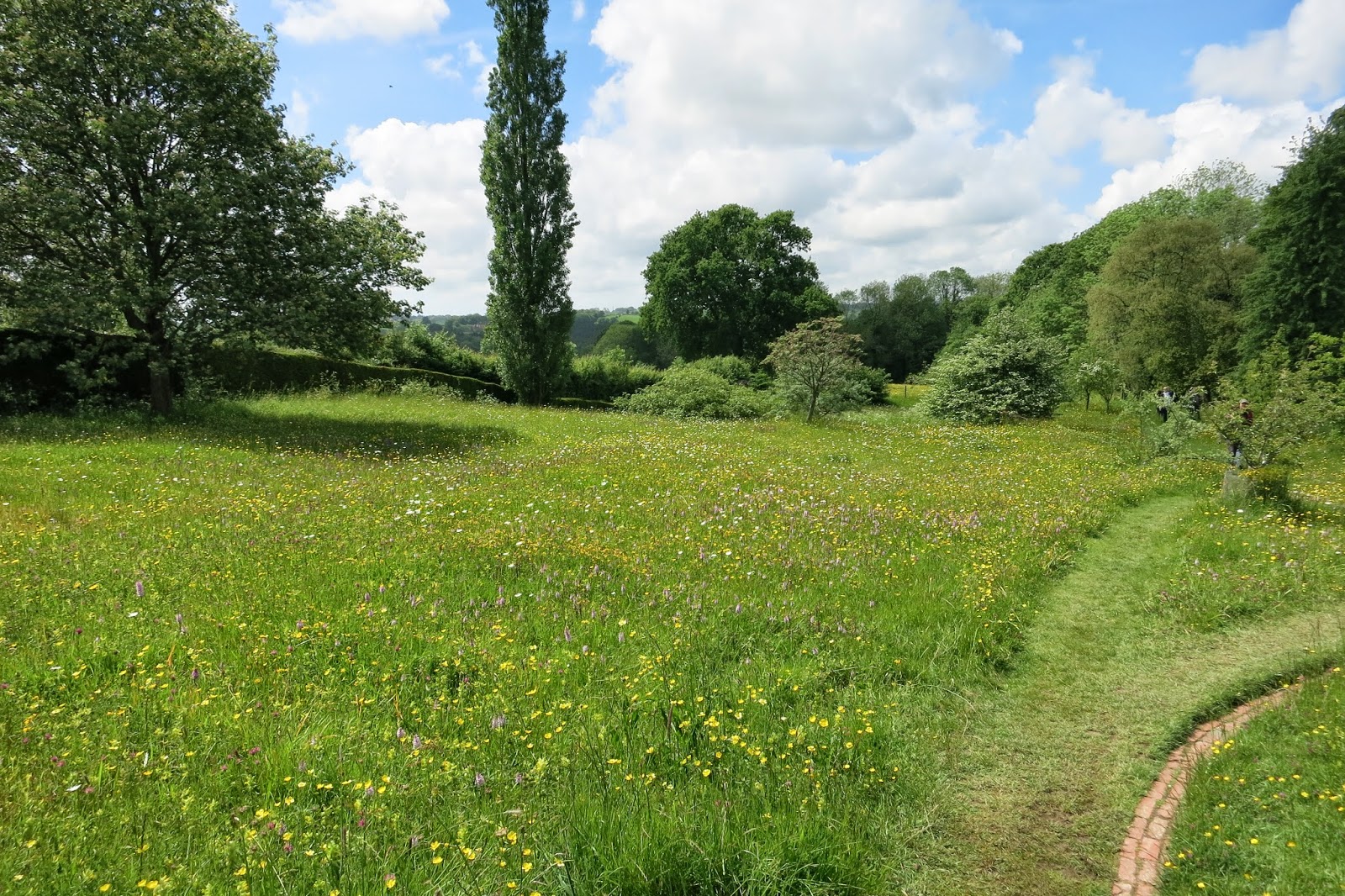The home of Henry VIII, the extensive palace hasn't been used except for special occasions for years. Located on the banks of the river Thames outside London, it has some excellent gardens including the "worlds oldest grapevine". Shown below is the enclosed rose garden which was in full flower during our visit.
The front of the palace has clipped yew trees, hundreds of years old, set in lawn with garden beds and large gravel paths which in this case lead from the palace to a fountain in the distance. It takes one man a whole day to clip one yew.
SCOTNEY CASTLE:
South east of London in Kent, Scotney Castle was a garden we hadn't seen before. It was magnificent with large rhododendrons and azaleas in full bloom. It is well worth a visit in the spring. It is set in the rolling Kent countryside on the banks of a river. The old castle, no longer in use, actually sits on an island in the river from which you can look up the through the gardens to the "new house".
Walking across the bridge to the old castle, you look along the moat which is densely planted.
Looking back up the hill toward the "new castle" you see the rhododendrons.
Again, a view across the moat.
GREAT DIXTER:
This garden is set around a 15th century house that was purchased by the Lloyd family about 1910 and rennovated with the help of the famous architect Edwin Lutyens. The house was finished about 1912 and the family moved in. Christopher Lloyd was born in the 1920s and he developed a passion for gardening. He expanded the existing garden as well as creating his own artistic style in the plantings. There are open meadows of wildflowers:
Plants in pots massed together on the edge of a patio
and garden beds crammed with massed plants many with bright flowers, but others with contrasting foliage.
There is an extraordinary mix of informal massed plantings and formal hedges and topiary
Christopher Lloyd really showed that you could create a garden that defies tradition yet still works wonderfully well. Below is a meadow of wildflowers, so informal, mixed with highly clipped and stylized bushes which are so formal, seen for example at Hampton Court. It all works brilliantly!
SISSINGHURST CASTLE:
Kent is also home to one of the most famous gardens in the UK, Sissinghurst Castle. Developed by Vita Sackville-West and her diplomat husband Harold Nicolson in the 1930's it surrounds an old castle and outbuildings. The gardens are designed in a series of rooms some as shown below with an expanse of grass with an English border.
Other garden rooms are "themed" with this garden being the famous "white garden" which unfortunately was not at its best for our visit, we were too early in the season.
Unfortunately the garden is so famous it is loved to death by large numbers of visitors which makes it hard to enjoy its beauty.
Some areas of the gardens have long stunning vistas, in this case with fragrant azaleas on the right and Chinese wisteria on the left.
Harold Nicolson's pet creation was the "lime walk" again providing a contrast with the more colourful and packed garden beds.


















